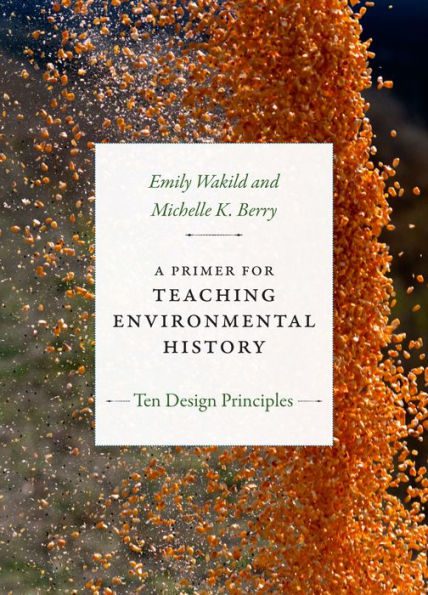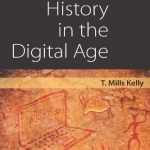by Bryan Sitzes
Environmental history is an approach that broadens our historical scope by acknowledging how the human and non-human worlds have interacted and shaped each other’s fates over time. Emily Wakild and Michelle K. Berry have produced a guide that teachers with diverse historical interests can apply in high school, undergraduate, or graduate classrooms. The authors envision teachers using A Primer for Teaching Environmental History in two ways: creating an entirely new course on environmental history or integrating environmental history into a more general history course. Despite their environmental focus, the disciplinary skills and pedagogical techniques they share are applicable in any history classroom. Whether you are looking to update your high school US history survey or conduct a graduate seminar on colonial histories of water, Wakild and Berry offer relevant advice on identifying course objectives, course structure preparation, communicating and engaging with students, developing disciplinary skills through activities and projects, assessment, and a great deal more. They pair these general concepts with examples from their own classrooms and suggest how other teachers might tweak the techniques to fit their own class.
A particular strength of Teaching Environmental History is that the authors repeatedly show teachers how to structure activities, units, and an entire course so that earlier lessons provide foundations for later, more complex ideas. The first tip in the book suggests asking students to think about their lunch – a tangible and personal object – and consider what processes were necessary for this sandwich or energy bar to arrive in their possession (farmers growing grains, rainfall watering agricultural fields, extracted oil powering global trade networks, etc.). Once students familiarize themselves with the various processes and relationships that make their lunch possible, Wakild and Berry show how teachers can historicize this concept by having students consider the history of bananas. Students listen to a 1922 song about a banana shortage in NYC and wonder, why was there a banana shortage? Students learn about globalization and teachers might choose to explore US foreign policy in Latin America, integrate economics by considering consumerism or labor, discuss the meanings of nature and natural, or begin interdisciplinary approaches by sharing papers on genetic engineering. A multitude of possibilities allow teachers to tailor the banana to the needs of their own classroom. Along the way, students learn to find sources, connect discrete information, and communicate what they found through writing assignments with topics they had a hand in choosing.

A Selection of Environmental History Books (see our article on teaching Environmental History)
The initial section on connecting students to environmental history also relates to a concept Wakild and Berry introduce at the end of their book: environmental justice and marginalized communities. Although teachers may want to avoid such a complex idea at the outset of the semester, the extremely visible effects of nature on contemporary society can also help students connect with course material. Wild fires in California, undrinkable water in Michigan, and hurricanes on the coasts are all issues students may already be familiar with. Teachers could use Elizabeth Rush’s Rising: Dispatches from the American Shore (2018) since she considers the effects of sea level rise and transmits the voices of affected coastal communities in California, Louisiana, Florida, and New York.
The second part of Teaching Environmental History shows how teachers can connect the various units in their course together through field excursions, human connections to space, and centering a semester around energy. Wakild and Berry consider the unique benefits and challenges of field trips, whether taking students to Latin America for a month, walking along a river that cuts through your local community, or creating assignments for distance-education students to go explore the outdoors in their areas. Students of today connect to spaces far beyond their local community through technology, and so helping students develop a sense of place can utilize the skills they already have. Teachers can pair Instagram or YouTube with diaries of travelers of the Oregon Trail or Indian Ocean to help students develop deeper feelings for places than if they only read a text.
Wakild and Berry end their primer by considering issues relevant to nearly every classroom: integrating technology and conducting assessments. Accordingly, approaches to incorporating environmental history take a backseat to discussions of general teaching philosophy in these chapters. Both technology and assessment actually appear throughout the book but receive extra attention in conclusion. The relative absence of environmental history discussions in the final chapters is a clue to the relevance of technology and assessment in all classrooms. They acknowledge the challenges these issues present while focusing on the immense benefits for students. Technology and assessments do not necessarily form pedagogical speed bumps or road blocks. With creativity, we can integrate institutional demands while continuing to imbue students with the skills necessary to critically reflect on the past and become well-informed global citizens. That is the primary objective Wakild and Berry want to help other teachers achieve.
In their epilogue, Wakild and Berry anticipate criticisms that their examples might skew too heavily toward modern histories and that too many “extra-disciplinary” approaches like environmental justice or natural science research risks diluting the requirements of a history course. I do not find either of these potential criticisms very problematic. Examples from the 19th, 20th, and 21st centuries help demonstrate the relevance of environment history to students unfamiliar with the discipline, and the techniques the authors share can be translated to use with earlier histories if some teachers desire. As for diluting the historical discipline of the class, environment history thrives best when traditional skills of historians are combined with other approaches. Interdisciplinarity also allows teachers to engage more of their students, since some will surely be more interested in literature or the natural sciences. Any environmental historian who intends to teach should read A Primer for Teaching Environmental History, and teachers of all kinds will probably find it useful in preparing for their next semester.




